Philodendron micans or Velvet leaf Philodendron, scientifically known as Philodendron hederaceum var. hederaceum, is a popular houseplant in North America and other parts of the world.
Everyone loves the light green, dark green, bronze, or green-purple velvety heart-shaped leaves. Also, it is easy to care for and purifies the air.
We’ve Philodendron micans care (humidity, light, temp., soil mix, watering, fertilizer, repotting, pruning, etc.), propagation, and a description of its appearance (juvenile and mature plants appearance and growing habits).
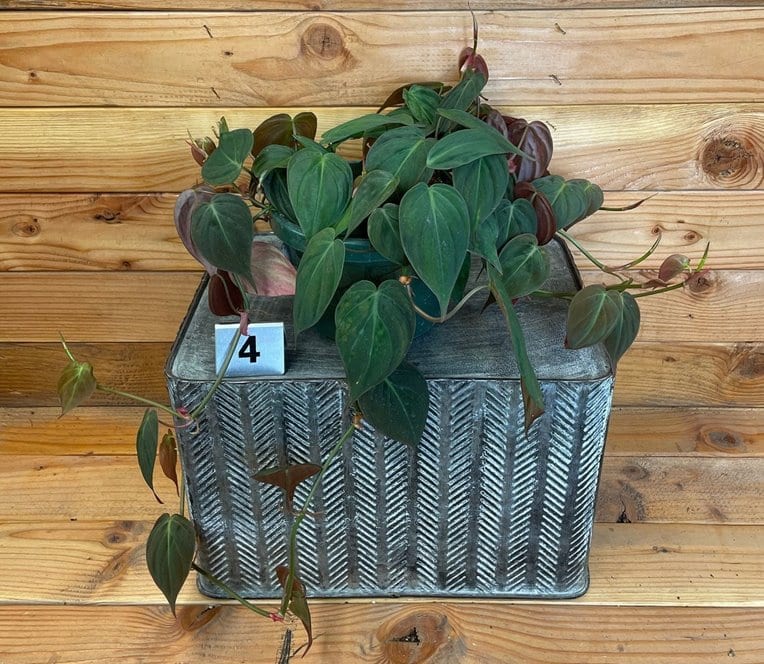
That is not all. We will also cover common problems like leaves curling, turning yellow, brown, black, pests, disease, etc. Also, we will tell you where to find Philodendron micans on sale, Etsy.com being our favorite.
Contents
- Quick overview
- Description and appearance
- 1. Growing habits
- 2. Philodendron hederaceum micans growth rate
- 3. Juvenile leaves
- 4. Mature Philodendron micans leaves
- 5. Stems
- 6. Flowers
- Philodendron micans care
- 1. USDA hardiness zone
- 2. Humidity
- 3. Temperature
- 4. Philodendron micans light needs or requirements
- 5. Philodendron micans soil mix
- 6. Watering
- 7. Fertilizers
- 8. Pruning
- 9. Repotting
- 10. Staking or support
- Philodendron micans propagation
- 1. Propagating Philodendron micans in soil
- 2. Water propagation
- 3. Air layering
- Issues and problems
- 1. Pests
- 2. Diseases
- 3. Root rot
- 4. Other issues
- Where to find Philodendron micans on sale
- Frequently asked questions (FAQs)
Quick overview
Philodendron hederaceum var. hederaceum (Philodendron micans) is one of the Philodendron hederaceum varieites. Others are var. kirkbridei and var. oxycardium. Also, there are cultivars like Philodendron Brasil and Lime Lemon.
The correct name is Philodendron hederaceum (heartleaf Philodendron, sweetheart plant, or Parlor Ivy), and Philodendron scandens is a synonym. Some people wrongly call it Philodendron cordatum Hort., but you should regard this as only a horticultural name. Otherwise, Philodendron cordatum is a different species.
Last but not least, some people claim to have a rare Philodendron micans red. But our assessment doesn’t show any significant difference besides the reddish leaf appearance in some plants as it emerges.
- Scientific name: Philodendron hederaceum var. hederaceum
- Common name(s): Philodendron micans, velvet leaf Philodendron, velvet Philodendron, Philodendron hederaceum micans, or Philodendron scandens micans
- Family: Araceae
- Native habitat: Occurs in Mexico through to tropical America.
- Toxicity: Toxic or poisonous to humans, cats, and dogs
- Care level: low maintenance or easy
Description and appearance
What does the Philodendron micans plant look like (mature and juvenile form) and its growing habits?
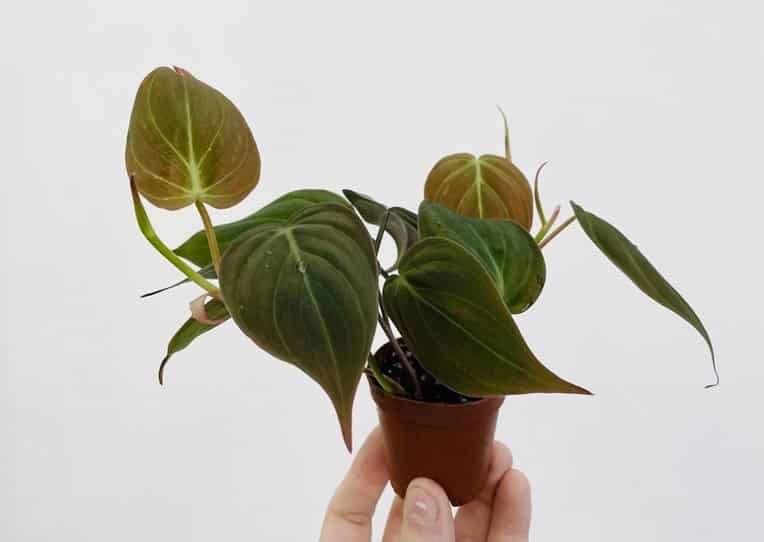
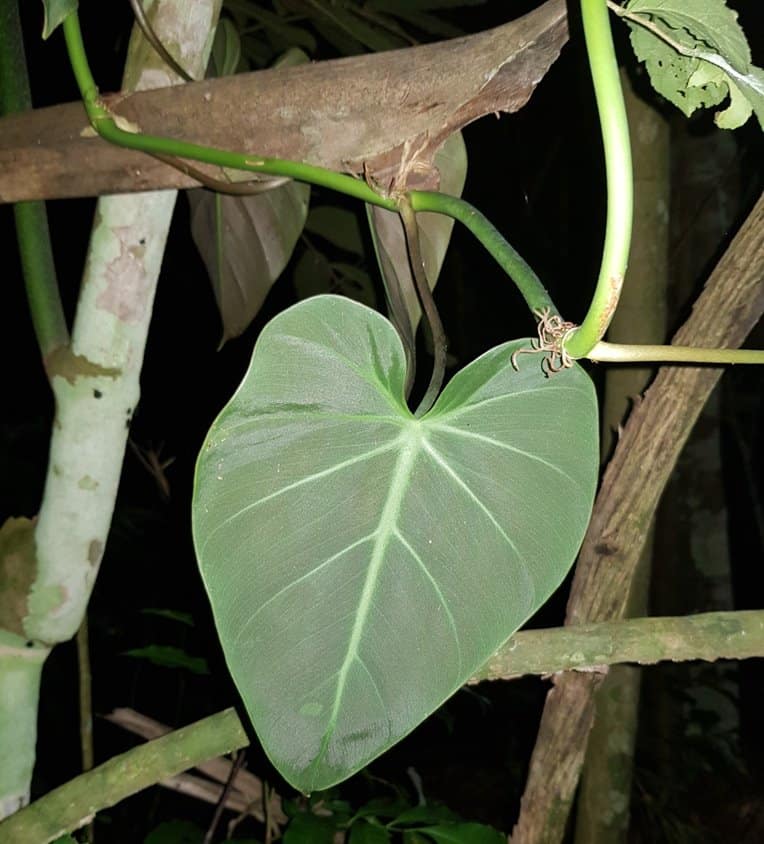
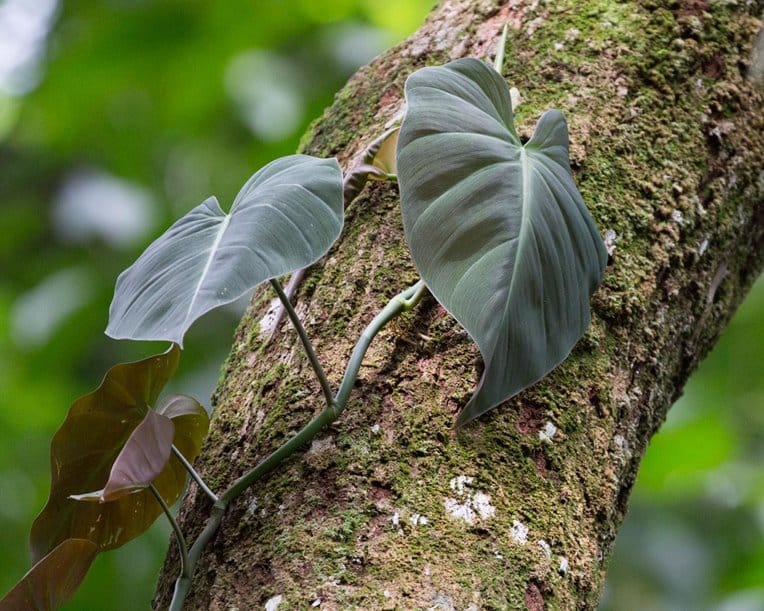
1. Growing habits
Philodendron hederaceum var. hederaceum is the most widespread Philodendron. It occurs in varied habitats, ranging from tropical moist to premontane and tropical wet forests in tropical America and Mexico. But it has been introduced to Bangladesh and Seychelles.
This evergreen vining (climbing, spreading, or cascading) flowering is a hemiepiphyte. So, it has a growth phase as a terrestrial plant and an epiphyte). Epiphytes are plants that grow non-parasitically on other plants.
In the ornamental and houseplant trade, you see the juvenile version of Philodendron micans. There is a mature form that has larger leaves
2. Philodendron hederaceum micans growth rate
Philodendron micans is a fast-growing vining plant. It can grow up to 20 feet (6 meters) or taller in the wild. But as a houseplant, it will be about 4 to 6 feet and will need a climbing place to be this tall.
3. Juvenile leaves
Juvenile Philodendron micans have light to dark green to emerald green to bronze to green-purple heart-shaped velvety leaves with a reddish-purple or burgundy underside. But newly emerging leaves may be chartreuse or yellow-green and have pink or purplish highlights.
These leaves are smaller, 3-6 inches wide, and about 1-3 inches wide, and their petiole resemble leaf underside as they emerge.
4. Mature Philodendron micans leaves
Mature Philodendron micans will have larger 20 inches (50 cm) and 13 inches (34 cm) broad heart-shaped glossy green leaves. Also, the leaves lose their burgundy or reddish-purple underside, i.e., becoming pale green.
Most people who grow this houseplant are unlikely to see the mature leaves as they only occur at some height from the ground and mainly in the native habitat.
Lastly, unlike the juvenile form, the petioles are longer, up to 13 inches (33 cm) long, and green in color.
5. Stems
The Velvet leaf Philodendron has medium green nearly round stems that may be smooth or have tiny speckled or striated. The internodes are relatively long, 3.9-9.8cm (10-25 cm), and deciduous cataphylls.
Leaves grow in a simple alternating matter and grow aerial roots, getting as long as 4 feet or more.
6. Flowers
Philodendron micans flowers are rare under cultivation. But in the wild, botanists report seeing them mainly in October or November. But it may occur in any month.
Micans has a solitary inflorescence flower (one per axil) with spathe and spadix. The spathe is slightly longer than the peduncle and is often green but at times yellowish-white.
On the other hand, the spathe blade may have a purplish tinged on the outer side, while the spathe tube is darker and may have a reddish maroon tinge outside.
Lastly, the spadix has the lower female section, a middle sterile, and an upper fertile zone
Philodendron micans care
Philodendron micans care needs are not hard to meet. It can grow well under average household humidity and temperature. But you need to ensure it gets bright, indirect light.
Other velvet leaf Philodendron care includes proper watering, feeding, providing the right potting mix, etc.
Here is how to care for Philodendron micans:
1. USDA hardiness zone
P. micans USDA hardiness zone is 10 to 11. It isn’t frost-hardy, and freezing temperatures cause damage. Grow it outdoors all year if you are in these zones.
2. Humidity
Philodendron micans thrive best in average or above-average humidity, 50% or more. But this plant will still grow under average household humidity. But if your house air is, you need to raise humidity.
Signs your humidity is low include dry, crispy brown edges and tips, drooping, leaves curling, yellowing, stunted growth, and increased water needs.
Correct humidity using a pebble tray, moving plants to a humid room, or buying a humidifier. Misting your plant will temporarily increase humidity, and you can also group your plants to help create a more humid microclimate.
3. Temperature
The ideal temperature for velvety leaf Philodendron is 65 to 85 degrees Fahrenheit (18-29°C).
Avoid temperatures below 55°F (10°C) or place your plant near heat-emitting sources or vents like radiators, house heating systems, appliances, etc. Also, avoid putting your plant near air conditioner vents or cold drafts, i.e., don’t put it on drafty doorways or windows when it’s cold or during winter.
4. Philodendron micans light needs or requirements
Philodendron micans need bright, indirect light for at least 12-14 hours a day but can tolerate medium, indirect light. Too little light will make your plant leggy, have smaller paler or yellow leaves, and grow slowly. Also, it will have reduced water needs, and your plant will have dull colorations.
People living in apartments that don’t get enough light should buy grow lights. Brands with 10,000 to 20,000 lux (1000 to 2000 footcandle) will support optimum growth. Try Relassy 15000Lux Sunlike Full Spectrum Grow Lamp. It has a gooseneck clampable stand and will last for up to 50,000 hours.
On the other hand, avoid direct sunlight as it will make leaves washed out or bleached, paler, yellow, and leaf scorch. Also, leaves may curl, or your plant may drop.
Outside, grow it under a shade. And if inside your house, place it at a distance from the window where it doesn’t get direct sunlight. But a little morning sun, if you are on the east-facing window, will not do much harm.
5. Philodendron micans soil mix
The best Philodendron soil mix should be well-drained, airy, and high in organic matter. Its pH should be slightly acidic (5.5-6.5), but neutral soils are ok.
You can go for loamy soil or soilless potting mix as long as it drains, is well aerated, and is nutrient-rich. You are free to buy aroid mixes from places like Etsy.com or make yours at home.
These plants aren’t so fussy when it comes to their soil. Did you know they can grow even on sphagnum moss alone? Typical mixes include the following:
- 40% potting mix, 20% peat moss or coco coir, 20% bark chips, 10% perlite, and 10% warm castings.
- Two parts of peat moss or coco coir, one part of perlite, and one part of bark fines
Peat moss or coco coir ensures the potting mix holds moisture, bark chips or perlite promotes drainage, while warm castings provide organic matter.
You can also add a handful of horticultural charcoal. It helps remove impurities from soil and odors, promotes nutrient absorption of excess water, and helps the soi hold on to nutrients, among other benefits.
6. Watering
These plants thrive best in moist soil (not soggy or too dry). You can allow the potting mix to dry slightly. So, we recommend watering your velvet leaf Philodendron when the top 2-3 inches of the potting mix feels dry.
How often two water depends on your conditions (temperature, light, or humidity), season, pot type, plant size, pot size, etc. It may be after a few days to a week in summer or spring or biweekly in the non-growing months.
Feel the soil, and only water if it feels dry up to your first finger knuckle. Don’t wait until the leaves start curling or your plant drooping.
Alternatively, you should buy XLUX Soil Moisture Meter or any other good brand. Water when the reading is in the dry zone. For XLUX, it is below 3.
When watering, saturate the soil until excess water flows from the drainage hole. But remember to discard any that collects in saucers or cachepots.
Overwatering Philodendron micans may cause root rot. Signs include a wet potting mix, lower leaves turning yellow, a moldy potting mix, a mushy stem base, brown splotches on leaves, wilting that doesn’t make leaves feel crispy, etc.
On the other hand, don’t let the potting mix be so dry, and start pulling from the pot edges. Signs of an underwatered P. micans include leaves curling, wilting or drooping, crispy brown edges and tips, and stunted growth. Also, leaves may turn yellow and fall off, and watering improves drooping and leaf curling.
7. Fertilizers
Micans are fast growers and hence heavy feeders. But if you have a potting mix rich in organic matter, they can grow without much fertilizing.
That said, feeding will ensure healthy and vibrant plants with larger leaves. So, we recommend feeding your velvet leaf Philodendron once a month with a balanced liquid houseplant fertilizer with necessary micronutrients during the growing months only at half strength.
However, you can feed about twice a month if you use a lowly concentrated brand such as Miracle-Gro Indoor Plant Food (Liquid) (NPK 1-1-1).
Alternatively, you can also use a balanced slow-release formula for houseplants. Start feeding in early spring and follow instructions given by manufacturers.
Last but not least, avoid the temptation of overfeeding as it will cause fertilizer burns, wilting, yellowing of leaves, stunted growth, etc.
8. Pruning
Pruning will mainly involve routine removal of dead, disease, or damaged leaves or plant parts with sterilized pruning scissors.
You can also cut back a few stems to control plant size and encourage fuller growth during the growing season. But at any given time, don’t remove more than ¼ of the foliage.
9. Repotting
Philodendron Micans needs repotting after every 2-3 years or if rootbound. Telltale signs your plant has overgrown the pot are roots growing from drainage holes, leggy plants, drooping, wilting, leaves turning yellow, and roots growing around the pot walls.
When repotting, use a pot 2-3 inches wider, and we recommend doing it during growing months.
10. Staking or support
You can provide Philodendron Micans with a trellis, moss pole, stake, etc., or not. It is all up to you and what you prefer. These plants will grow well and look fantastic on a stake, hanging baskets, or cascading onto your bookshelf, cabinet, etc.
You don’t have to worry much about vining, climbing, and spreading plants not growing mature leaves because this Philodendron hardly does that under cultivation.
Philodendron micans propagation
Philodendron micans propagation is by stem cutting in water or soil. But you can also go for air layering.
The best time to propagate this aroid is in winter or early spring. Why? Because it will have enough time to establish before the non-growing season.
We will talk about propagation in soil. Afterward, we will also give you something small in water propagation and air layering.
1. Propagating Philodendron micans in soil
Soil propagation is faster, offers extra nutrients to your plant, and the cutting will suffer less shock when you finally transplant it. But messy, and you cannot see roots growing.
What you need
- Nursery pot
- Potting mix or sphagnum moss
- Rooting hormone. Not mandatory, but it will spur faster rooting and prevent rooting.
- Transparent plastic bag
- Pruning scissors
- 70-90% rubbing alcohol for sterilizing your pruning scissors
How to propagate Philodendron Micans in soil
- Fill your nursery pot with your potting mix. If you use sphagnum moss alone, first soak it in water for 20-30 minutes and wring it.
- Select a healthy, mature stem, about 6-8 inches long with at least two nodes. Then cut it about ¼ an inch below the lower node with your sterilized pruning scissor. A node is a knobby area where leaves grow.
- If it has more than two leaves, remove the lower leaves and apply your rooting hormone on the cut end, covering the node you will plant into the soil
- Poke on your potting mix with a stick or finger and plant your Philodendron micans stem cutting, ensuring you bury at least one node. Then press some potting mix against the cutting to help hold it firm.
- Thoroughly water your potting mix until excess water flows from the drainage holes. Discard any that collects on the saucer. But if you used moistened sphagnum moss, don’t water your cutting.
- Cover your cutting with your transparent plastic bag, leaving a tiny breathing hole. But ensure the bag doesn’t touch any foliage.
- Place your velvety leaf Philodendron cutting in a warm place with bright indirect light.
- After a couple of days, routinely remove the plastic bag to allow your plant to breathe for a few hours. Also, mist the potting mix if it shows any signs of starting to dry.
By the end of the 4th to the 6th week, your cutting will have rooted, grown new foliage, ready for transplanting. But the exact time will depend on growing conditions.
2. Water propagation
Water propagation is less messy and gives you a chance to see roots growing. But your plant doesn’t get nutrients present in the soil, and plants will suffer a severer transplant shock.
After step 3 above, dip the cutting in a jar with water, immersing at least a node. But don’t immerse leaves.
Afterward, put it in a warm area with bright indirect light and after 3-4 days, replace the water and refill it when the level goes down.
Transplant your Micans when the roots are about 2-3 inches long, and you see new growth.
3. Air layering
Air layering involves wrapping moist sphagnum moss around the node on the stem intended for propagation while still attached to the mother plant.
Then you will be wetting the sphagnum moss and if using a plastic bag, poke holes on it to allow for aeration. When the roots are long enough, cut the stem and plant it.
Issues and problems
As you grow your velvet leaf Philodendron, you may notice some issues or problems, like pests, disease, leaf discoloration, etc. Let us briefly look at these issues.
1. Pests
Philodendrons grown indoors hardly get pests. But these plants are not entirely immune. Your plant may end up with sap-sucking aphids, mealybugs, scale insects, spider mites, and thrips.
Check if your plant has bugs that appear as bumps, spots, or dots. Some of these bugs have wings others don’t. Also, some have a waxy body. Use a 10X magnifying glass to check for these bugs, especially on the leaves’ underside and hidden areas.
Signs are specific to the bug present. Some include spots (black, brown, yellow, or whitish), honeydew, sooty mold, silvery stippling, webbing, etc. A heavy infestation will make leaves curly, mishappen, yellow, etc.
Use insecticidal soaps, neem oil, or horticultural oils to control these pests. A brand like Bonide BND022 will help you deal with these bugs.
Fungus gnats are other pests we shouldn’t ignore. Their larvae feed on roots and may cause sudden wilting, leaves turning yellow, stunted growth, etc. To manage these gnats, pour a 20% hydrogen peroxide solution (1 part hydrogen peroxide to 4 parts of water) into the root area
2. Diseases
Diseases are uncommon. But your plant may end up with bacterial or fungal leaf spots, rusts, and blights. Common ones are Xanthomonas ssp., Erwinia ssp., Pseudomonas cichorii, Phytophthora, Southern blight, and some roots rot diseases.
Signs are brown water-soaked or dry spots, some with a yellow halo that may grow or have sunken centers, etc.
Practice proper sanitation (wash hands before handling new plants and sterilize gardening tools) and isolate new plants.
Lastly, use your sterilized pruning scissor to chop the affected part in case of any of these diseases. In case of a fungal infection, use a fungicide. But if your plant has a bacterial disease, there is no cure. But copper-containing bactericide will help prevent the spread.
3. Root rot
Overwatering velvet leaf Philodendron may result in root rot. Signs include yellow leaves, starting with lower ones, wilting that doesn’t improve with watering, leaves falling off, stunted growth, etc.
If the root hasn’t affected the entire root ball, consider repotting your plant. And as you do so, cut off the decayed bits with sterilized gardening scissors. Also, apply a fungicide to prevent a recurrence.
4. Other issues
Besides the above, your plant may also have these problems.
i. Philodendron micans leaves turning yellow
The most likely cause is overwatering, which affects lower leaves first. Check if the potting mix is always soggy. Other possible reasons are too little light, sunburn, nutritional deficiencies, underwatering, low humidity, and extreme temperatures.
ii. Brown tips, edges, spots, and leaves
If you see brown tips and edges, likely causes are low humidity, direct sunlight (sunburn), underwatering, fertilizer burns, and heat stress. But transplant shock may also be to blame.
Brown spots indicate pests and diseases, while splotches signify overwatering or cold drafts
iii. Black spots and leaves
Mican black spots are a likely indication of pests and diseases. Lesser possible causes are cold damage, overwatering, and water quality.
iv. Philodendron micans leaves curling
Curling is a response to help minimize water loss from leaves or protect your plant. Underwatering, low humidity, too much light, and heat stress are the common causes. Other reasons are transplant shock, rootbound, etc.
v. Drooping and wilting
leaves droop when cells don’t have enough water to keep them turgid. So, the primary cause is underwatering or anything that makes them lose much water. Here you will find reasons like low humidity, too much light, heat stress, etc.
But overwatering is also a possible cause since it cuts oxygen from roots, making them unable to function or absorb water.
Where to find Philodendron micans on sale
Philodendron micans is a rare plant. But it isn’t so hard to find. If you need one, the best place to buy it is Etsy.com. This marketplace has many vendors and the best prices. Also, you will find vendors from your area, be it the US, the UK, Canada, Australia, New Zealand, Singapore, or wherever you are or are willing to ship.
Other excellent places to buy micans, including amongst big box stores, are:
- eBay.com
- Home Depot
- Walmart
- Hirt’s
- Logee’s
- Planterina
The other place to search for this plant is Facebook plant groups or vendors and Instagram. Here you will find so many people selling this adorable plant.
If you haven’t found it, google “Philodendron micans for sale” and see what suggestions you get. We bet you won’t fail to find a vendor near you.
Frequently asked questions (FAQs)
No. Philodendron micans is not a very rare or expensive houseplant. It’s available at some big box stores like Home Depot and Walmart. Even some local tropical plant stores do have it.
The average price of Philodendron micans is $15-$50 for rooted to established plants. But if you opt for unrooted cutting and starter plants, you will spend between $5 to $15.
Yes. All Philodendron micans parts are toxic to humans, cats, dogs, and other pets since it contains insoluble calcium oxalate. These sharp, needle-like crystals will cause severe oral irritation and a burning sensation.
Other signs are swelling of the mouth, lips, tongue, drooling, swallowing difficulty, etc. Also, it may cause mild skin irritation in humans and mouth pawing in pets.
Yes. We have seen variegated Philodendron micans in the various marketplaces including Etsy.com, with mainly whitish or cream streaks, with some having a whitish margin. These variegated plants are between $500 and $1300. We cannot comment more on them at this point.

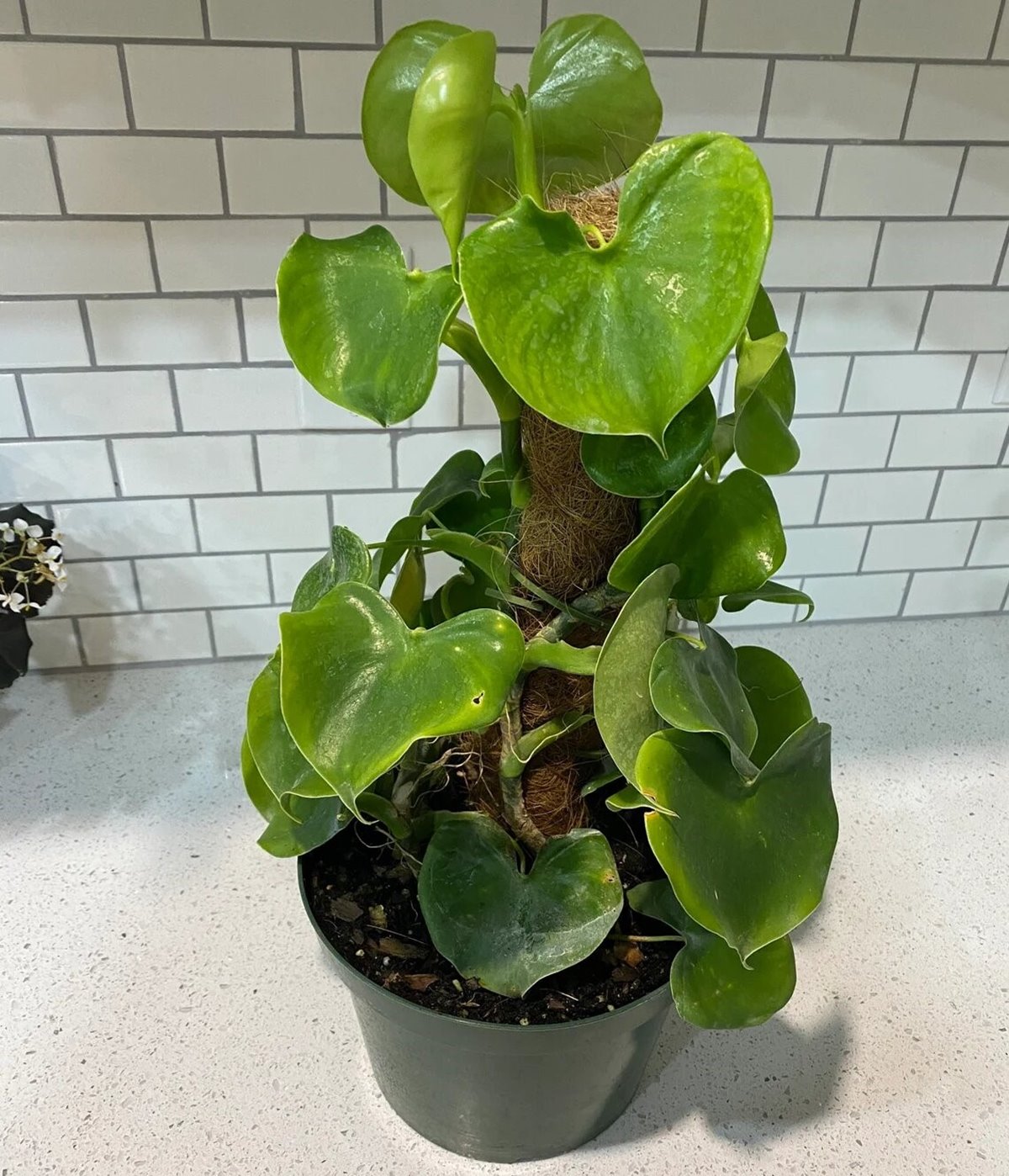
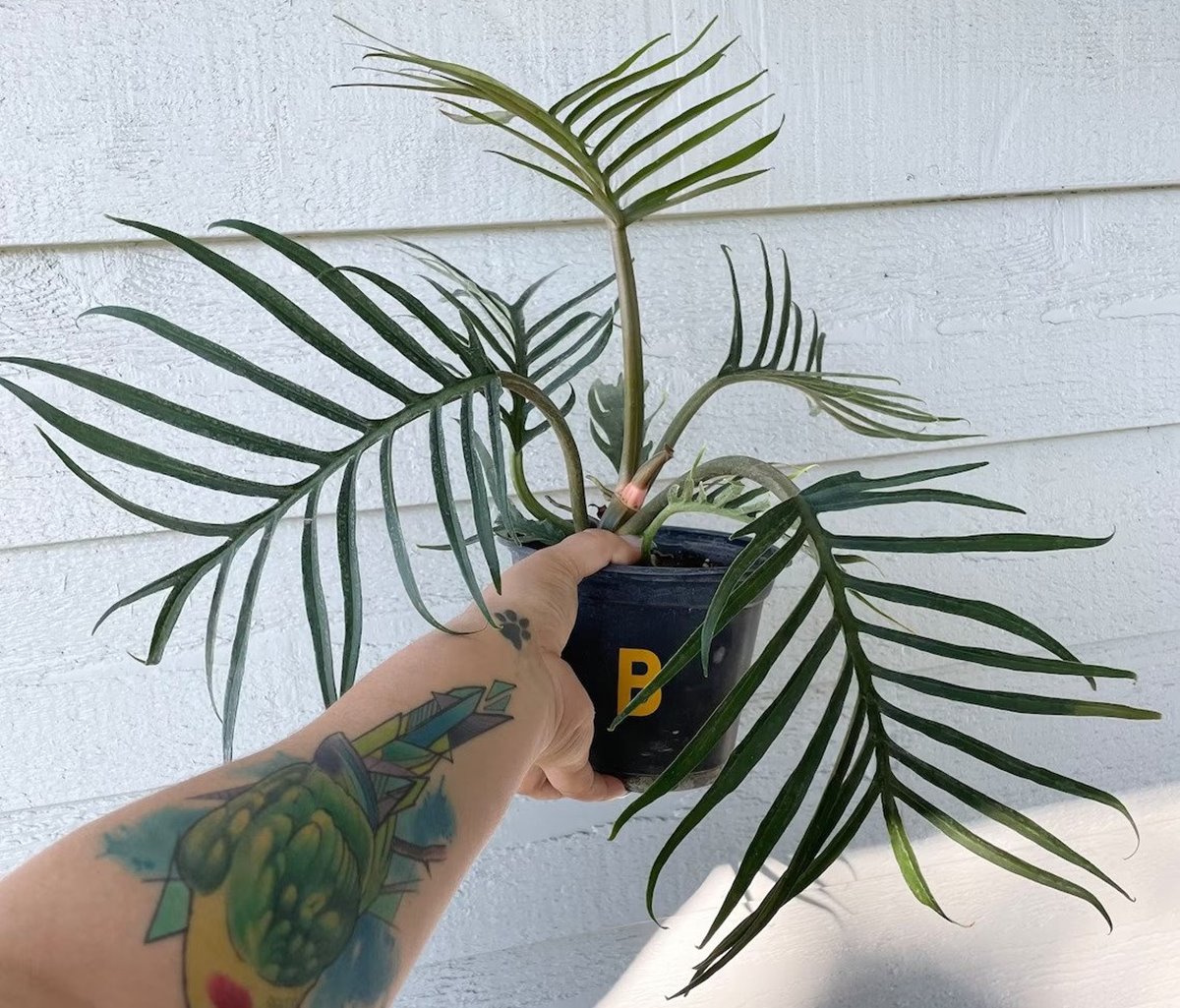
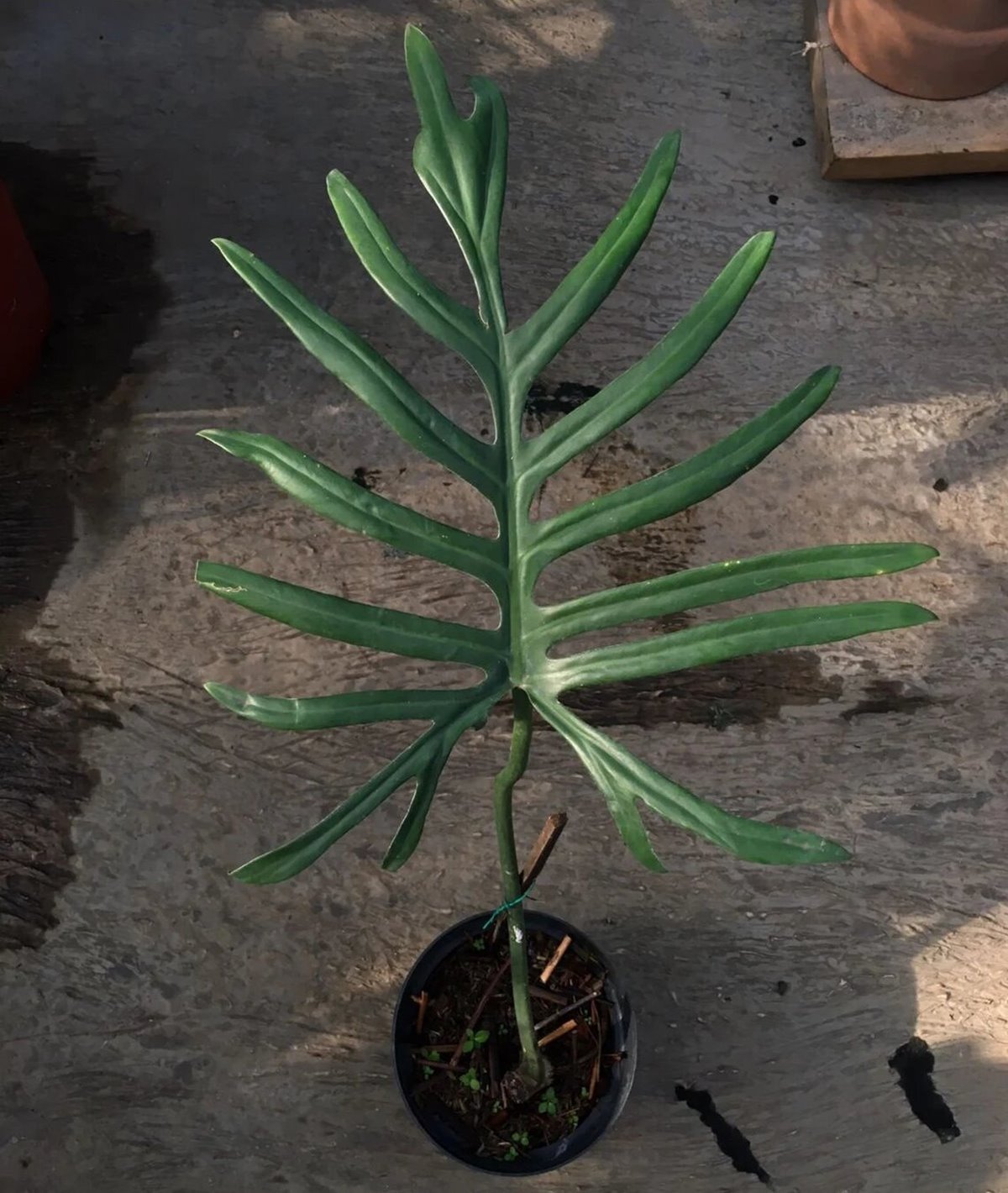

Leave a Reply